The History of The Mail Service to South Africa
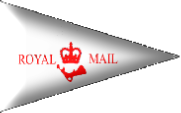

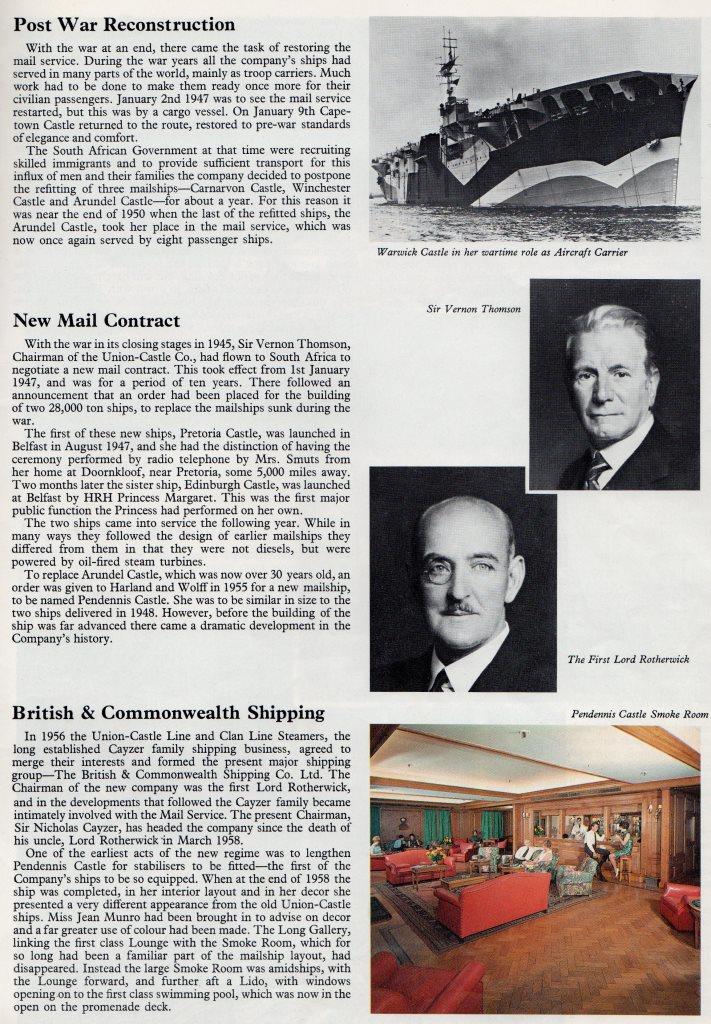


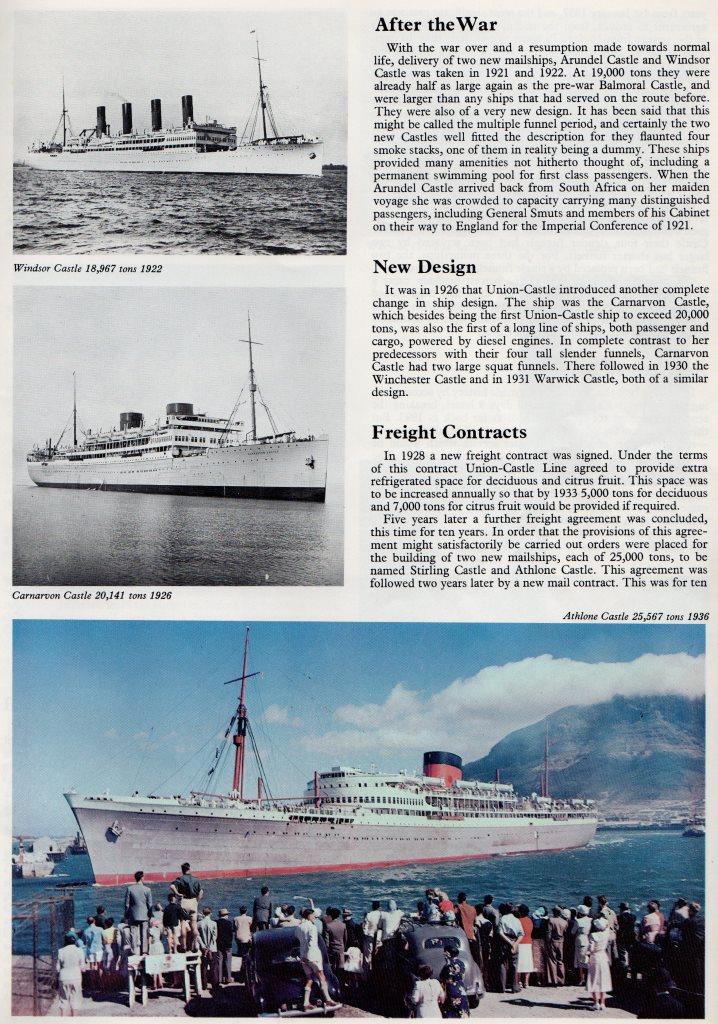

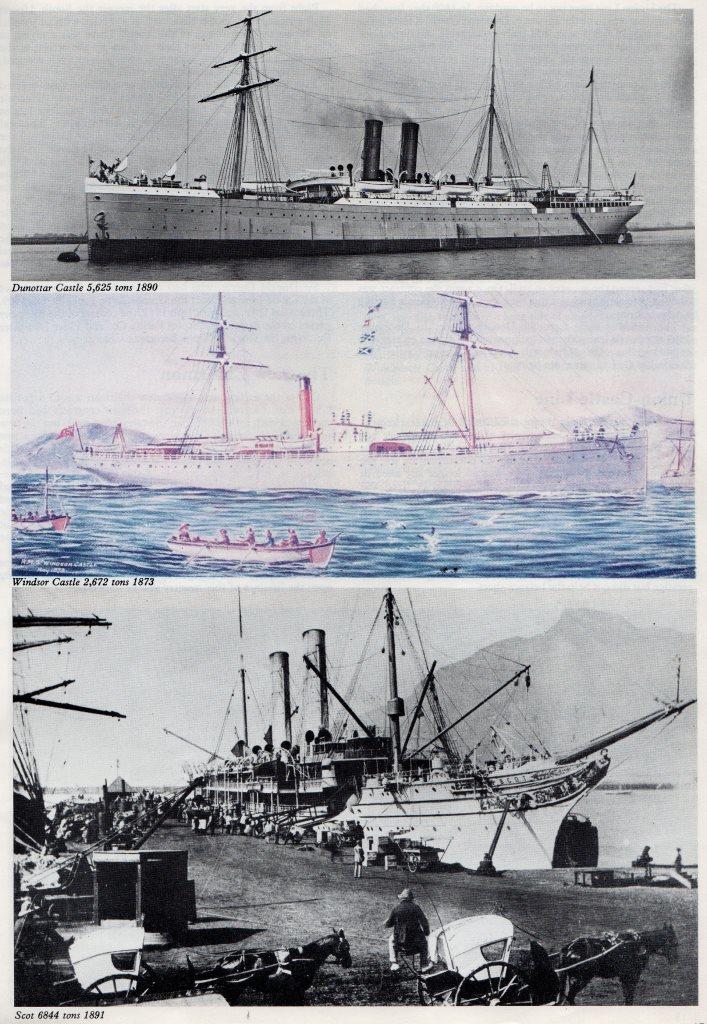
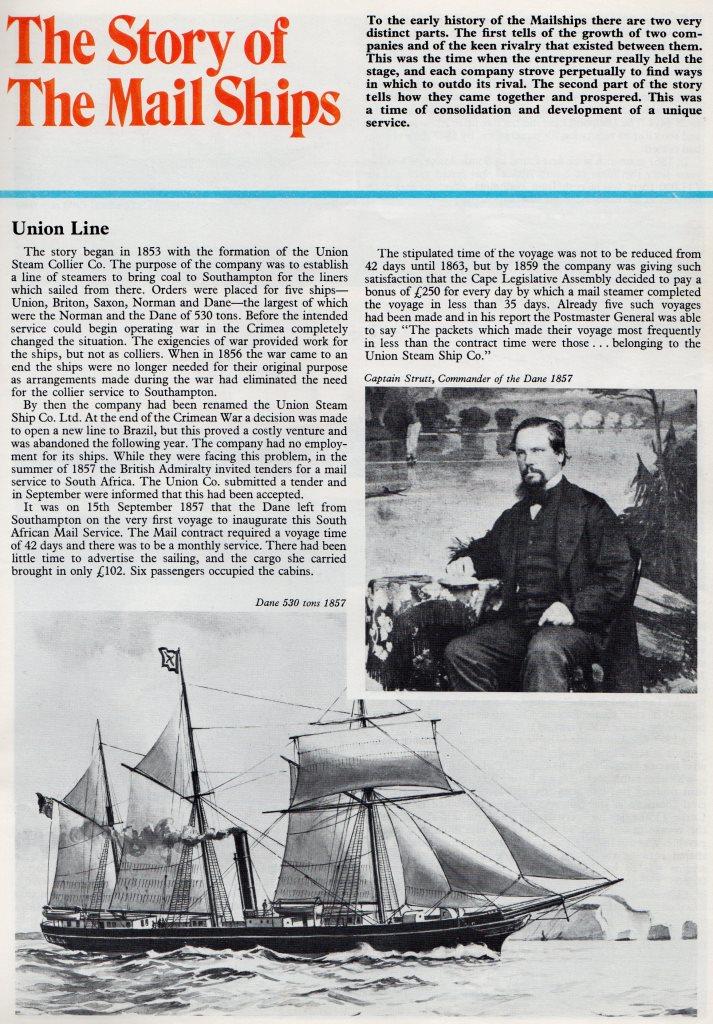

From Clansman December 1977
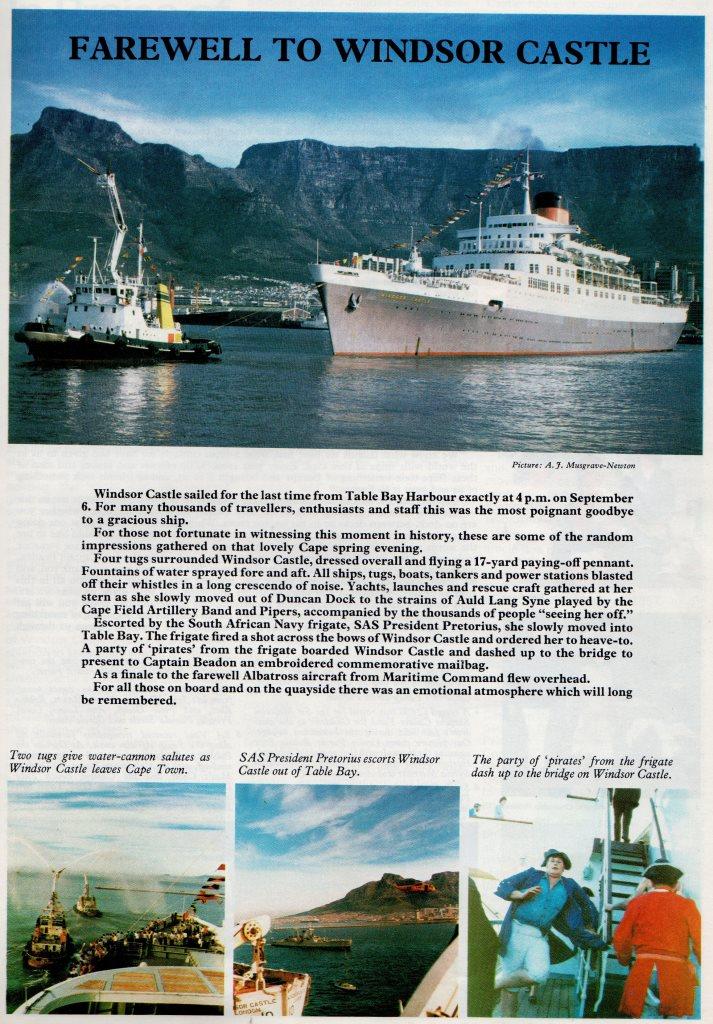
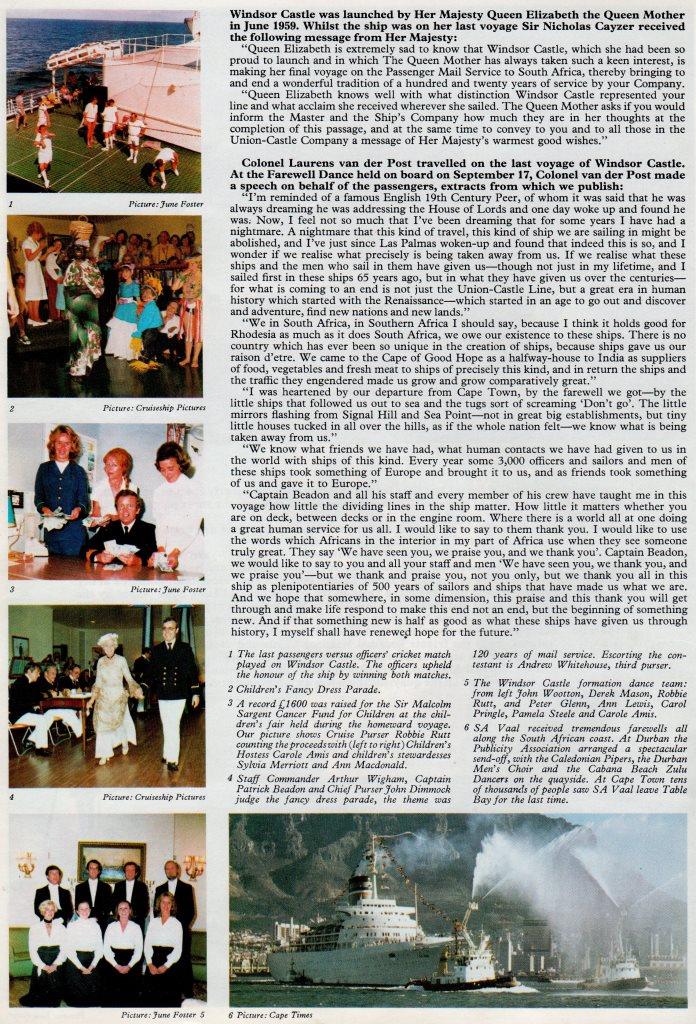

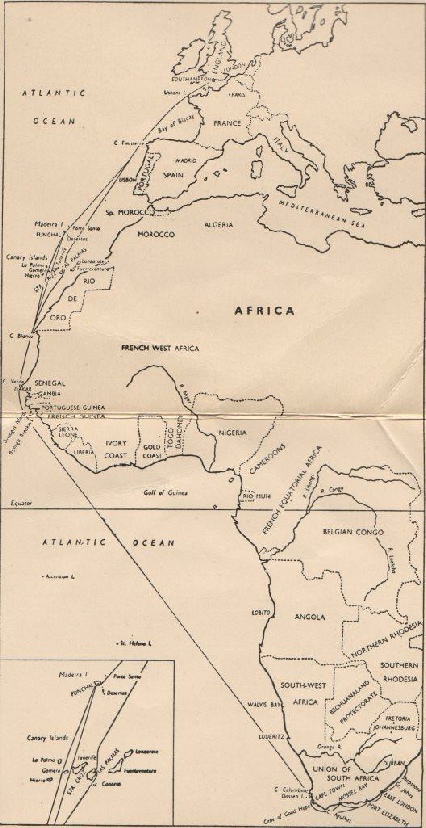
This narrative is taken from the descriptive notices which the Purser exhibits on the ship’s notice board on the voyage to Durban as the vessel approaches the port of call or point of interest concerned.
.A table of sea distances in nautical miles between the ports of call on the voyage to Durban at each port.
Passengers could also obtain from the Bureau a copy of our Folder Map of Africa showing Routes of the Company’s Services, together with booklets giving details of the itineraries and cost of shore excursions at principal ports of call.
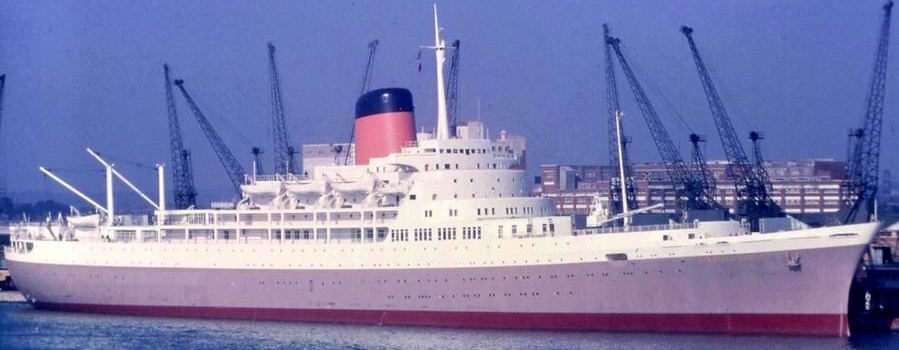
Transvaal Castle at Southampton
100 Years of The Weekly Mail Service 1876 - 1976
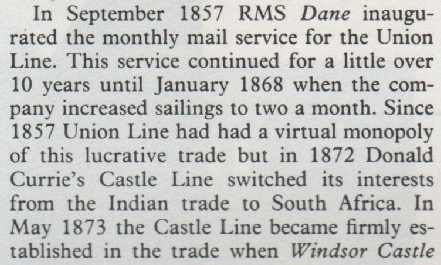
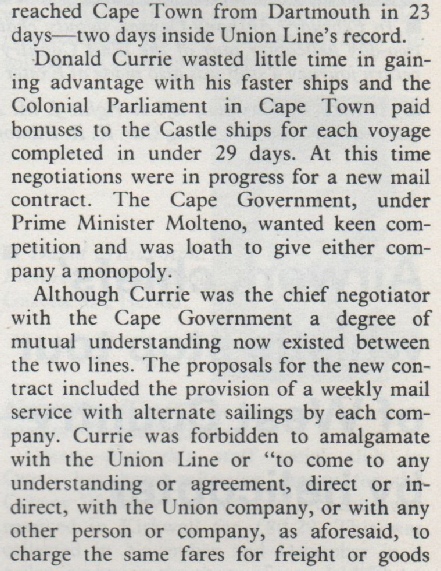
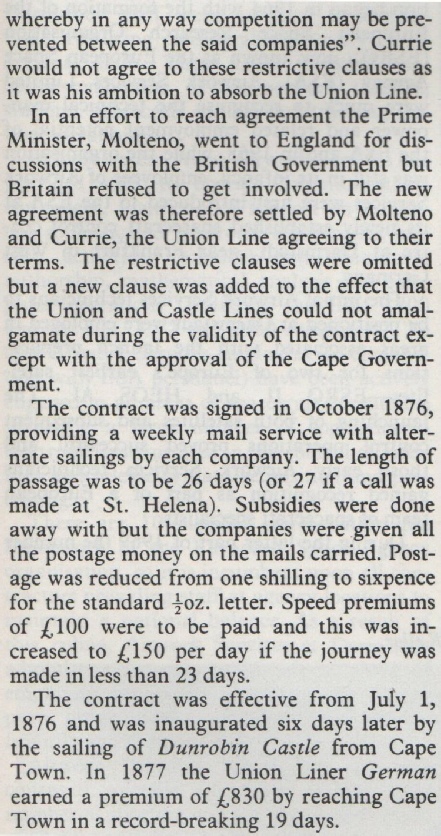
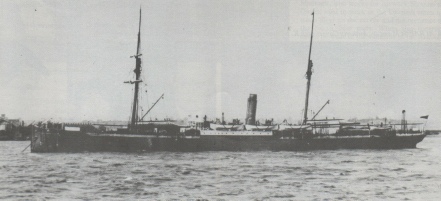
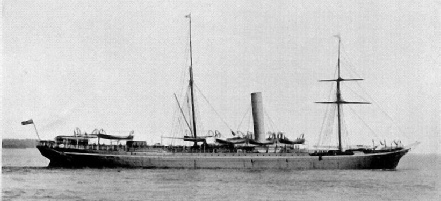
The two vessels that inaugurated the weekly mail service
Left: RMS Nubian of The Union Line Right: RMS Dunrobin Castle of The Castle Line
The Voyage to The Cape
The End of The Line - 1977
Southampton
Nautical Miles to Cape Town 6008
Eighty miles by rail from London, Southampton ranks as Britain’s third largest seaport after London and Liverpool.
After undocking, our vessel passes down Southampton Water with Hythe on the starboard side, and the domed tower of the Royal Victoria Hospital, Netley is seen to port.
We pass Calshot Light Vessel and swing eastwards with the green park-like hills of the Isle of Wight to starboard and the Hampshire coast to port.
Our course lies past Spithead and the Naval Base of Portsmouth and between the two circular forst that jut out of the water to guard the entrance.
On rounding the Nab Tower (light) we enter the Channel and sail for some miles along the south-east coast of the Isle of Wight until the light on St Catherine’s Point drops astern.

Ushant
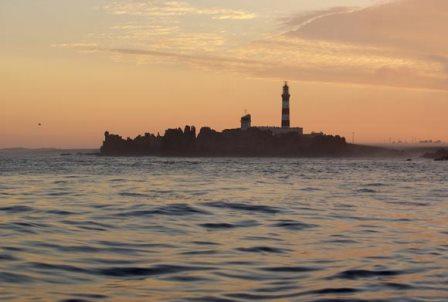 Nautical Miles from Southampton 233
Nautical Miles from Southampton 233
Nautical Miles to Cape Town 5775
This french island, two miles by four, marks the northern limit of the Bay of Biscay. Dangerous reefs stretch out from Ushant and in hazy weather we give the place a wide berth.

Cape Finisterre
 Nautical Miles from Southampton 614
Nautical Miles from Southampton 614
Nautical Miles to Cape Town 5394
After crossing the Bay of Biscay we sight the north-east corner of Spain, passing Cape Villano, Cape Torinana and finally Cape Finisterre, after which we leave land behind.
Spanish fishing vessels are frequently see in this vicinity.
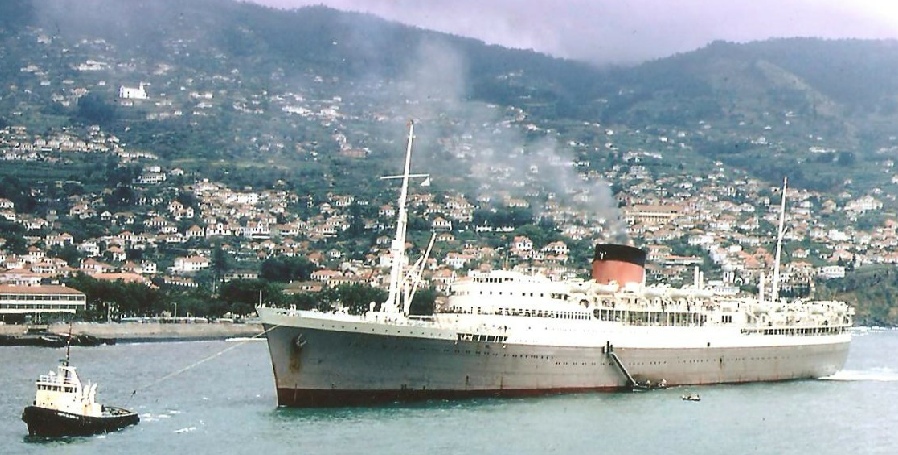
Capetown Castle at Funchal
Funchal - Madeira
 Nautical Miles from Southampton 1331
Nautical Miles from Southampton 1331
Nautical Miles to Cape Town 4677
Shortly before we sight Madeira, we pass Cima Island off the larger island of Porto Santo. Christopher Columbus lived for a time on Porto Santo and married the daughter of the Governor.
At the eastern tip of Madeira we pass a lighthouse on a rocky islet (Ilheu de Flora) and thenceforward, until we anchor in Funchal Bay about an hour later, we have a good view of the coast of this beautiful Portuguese island and can form some idea of its rugged grandeur.
Madeira is only about 35 miles by 13 miles but it is extremely mountainous and has one peak of over 6000 ft. The population is about 270,000.
Hardly is the anchor down before anxious dealers in local embroidery, wickerwork, etc., swarm on board; and boats and diving boys cluster round the ship’s sides.
Passengers usually have the opportunity of going ashore for about three hours. Suggestions for using their time to best advantage will be found in the up-to-date Guide to Madeira, available at the shop on board.
Carnarvon Castle
Puerto de la Luz - Las Palmas - Gran Canaria
 Nautical Miles from Southampton 1612
Nautical Miles from Southampton 1612
Nautical Miles to Cape Town 4396
Some Mail Vessels call at Las Palmas instead of Madeira. They sail down the eastern side of Grand Canary, affording a good view of the many villages scattered along its rugged coastline.
The area of Grand Canary is 634 sq miles and its highest peak is over 6400 ft. The population is over 300,000.
The ships berth at Peurto de la Luz at the north east corner of the island, the most important port belonging to Spain. Las Palmas, capital of the island, lies four miles away and the best way of spending a short stay is by taking a drive into the country, preferably to the Caldera Bandama an extinct volcano, returning by way of Las Palmas.
A party of folk dancers in picturesque costumes usually comes on board here to entertain the passengers.


Pendennis Castle
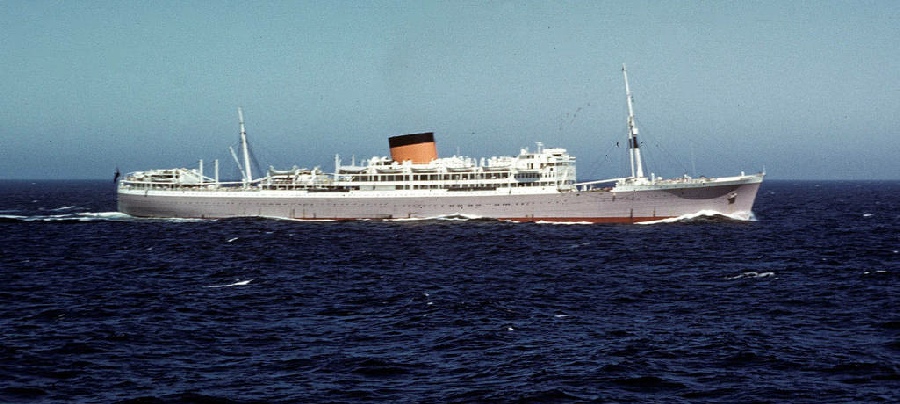
Cape Town to Port Elizabeth
Nautical Miles to Durban 810
On leaving Cape Town we proceed along the coast of the Cape Peninsula past Sea Point, Camps Bay, the Twelve Apostles and Slangkop Lighthouse, until after covering some 40 miles we round the Cape of Good Hope and Cape Point and leave the Atlantic for the warmer waters of the Indian Ocean. So we travel eastwards passing Cape Hangklip on the far side of False Bay, Danger Point, Cape Agulhas (the most southerly point of Africa) and past the port of Mossel Bay to Port Elizabeth
Port Elizabeth
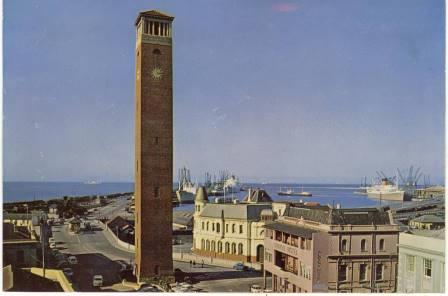 Nautical Miles from Cape Town 422
Nautical Miles from Cape Town 422
Nautical Miles to Durban 388
Here the vessel lies alongside a quay within easy walking distance of the city.
Port Elizabeth is an important commercial and industrial centre, 714 miles by rail from Johannesburg.
The population is about 220,000 of whom 90,000 are Europeans.
On the hill above the town is the Memorial to Lady Elizabeth Donkin, from whom the town takes its name.
In 1820 Port Elizabeth was the landing place of more than 3000 British settlers.

East London
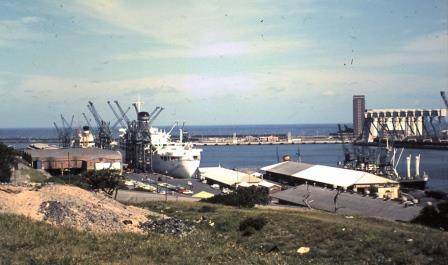 Nautical Miles from Cape Town 555
Nautical Miles from Cape Town 555
Nautical Miles to Durban 255
This port, which was founded in 1847, lies on the Buffalo River, which we enter, and the vessel is berthed alongside a quay on the East Bank near the city.
The population is about 100,000 of whom half are Europeans.
On the way to Durban we pass the Bashee River mouth, Port St Johns and a few miles before Port Shepstone we reach the boundary between the Cape Province and Natal.

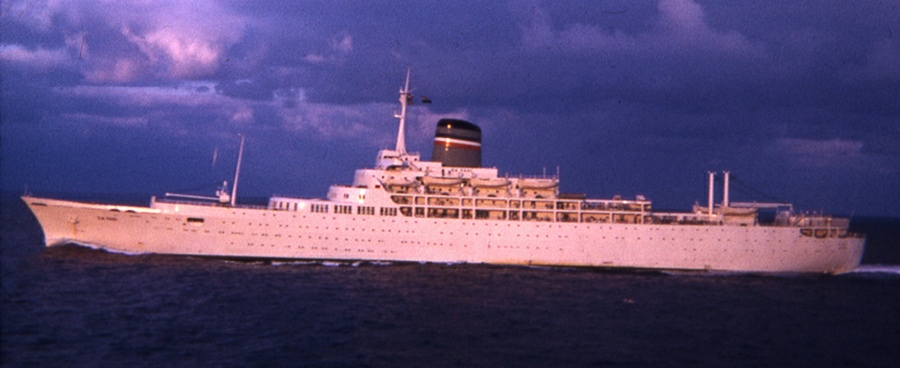
SA Vaal
Windsor Castle at East London
Durban
 Nautical Miles from Cape Town 810
Nautical Miles from Cape Town 810
Here our vessel enters Durban Bay at the end of her 6818 mile voyage from Southampton and berths at the passenger terminal, where she disembarks the last of her passengers and cargo.
Durban was founded in 1824 and is the port and largest city of Natal. It is an important industrial centre and holiday resort, 494 miles by rail from Johannesburg.
The population of over 450,00 includes 140,000 Europeans and 160,000 Asiatics
This is the terminus of the outward route. The last of the outward bound cargo is discharged and the holds cleaned and prepared for the loading of refrigerated fruit.
It is in Durban that gold bullion would be loaded just prior to departure. It always amused me to see the high level of security that was put in place when loading the bullion. Armed guards on the quay. On deck and in the cargo hold. This contrasted with the security provided in Southampton for discharge. One policeman with a dog and if it was raining the dog would stay in the police van. The bullion was loaded onto an open truck and then onto the boat train.


The Coastal Passage from Cape Town to Durban
Teneriffe and Gomera
 Nautical Miles from Southampton 1592
Nautical Miles from Southampton 1592
Nautical Miles to Cape Town 4416
The Mail Route for ships calling Madeira passes between the Spanish islands of Teneriffe and Gomera, belonging to the Canary Island group.
As we sail between Teno Point on Teneriffe (port side) and Cristobel Point on Gomera we have a good view of both islands.
Teneriffe is of considerable commercial importance and supports a population of 430,000. Its famous peak, 12,152 ft is sometimes visible from over 100 miles.
Gomera is smaller and has only 30,000 inhabitants.
An alternative and more westerly route is sometimes followed by the Mail Vessels and in this event, if the weather is clear, we may have distant views of the islands of La Palma (starboard) , Gomera (port) and Hierro (starboard).


Edinburgh Castle
Cape Verde
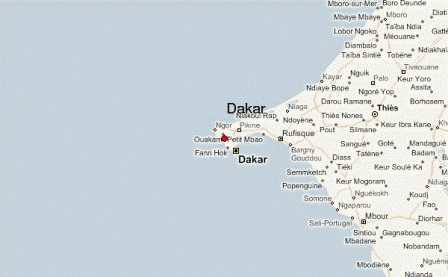 Nautical Miles from Southampton 2407
Nautical Miles from Southampton 2407
Nautical Miles to Cape Town 3601
The cape, which is in French Senegal, is the most westerly point of Africa.
Above the Cape are two hills which, in the rainy season, are covered with vegetation and on a spit of land which runs out the the Almadies Lighthouse may be seen the wrecks of vessels that have gone ashore on the dangerous reef.
Cape Verde is on the peninsula forming the west side of Goree Bay and in which the large port of Dakar (population 150,000), capital of French West Africa.
Dakar is usually visible soon after rounding Cape Verde.

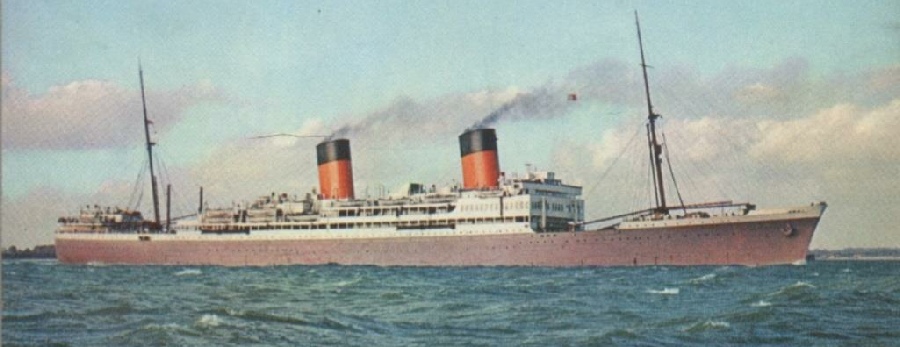
Arundel Castle
Bijouga Breakers
Nautical Miles from Southampton 2610
Nautical Miles to Cape Town 3398
We pass 20 miles west-south-west of these breakers, which are of the coast of Portuguese Guinea, but are not visible. From here our course is set for 10 miles south-west of Dassen Island, and remains unaltered for over 3,300 miles.
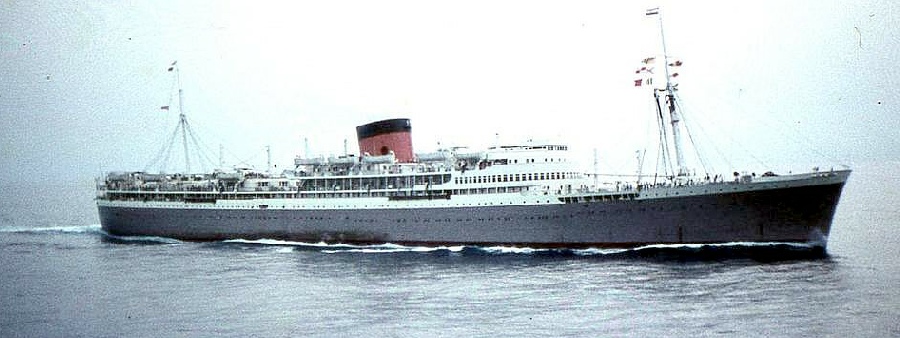
Athlone Castle
The Equator
 Nautical Miles from Southampton 3446
Nautical Miles from Southampton 3446
Nautical Miles to Cape Town 2562
The Equator is a great circle of the Earth equidistant from the poles, or more simply, the line that divides the Northern Hemisphere from the Southern. Tropical rains, very heavy at times, are experienced here.
The Crossing the Line Ceremony, which used always to be associated with this latitude, dates back for hundreds of years and has been a custom with sailors of many nations.
Originally the idea behind the ceremony was always the collection of fines from those crossing the line for the first time, to be converted by King Neptune and his retainers into drink.
In the vicinity of the Equator we pass through the Doldrums, a belt of calms, which lies between the equatorial limits of the NE and SE trade winds.
The position and extent of the Doldrums vary according to season.

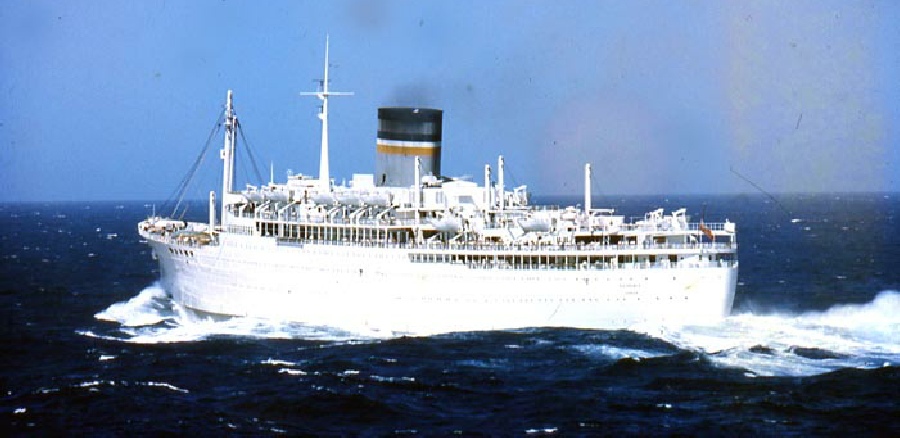
SA Oranje ex Pretoria Castle
Cape Columbine
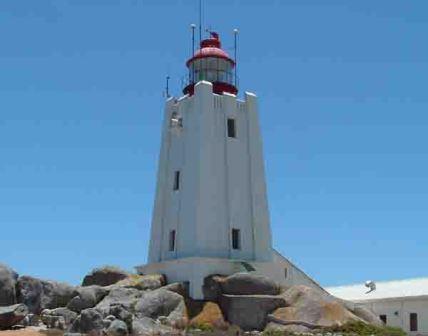 Nautical Miles from Southampton 5939
Nautical Miles from Southampton 5939
Nautical Miles to Cape Town 69
Cape Columbine lies a few miles north of Saldanha Bay.
Its powerful light which flashes every 15 seconds will be our first glimpse of South Africa

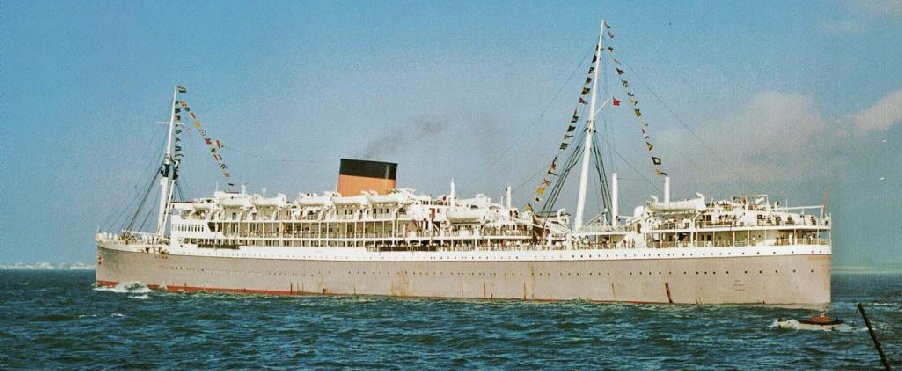
Winchester Castle
Dassen Island
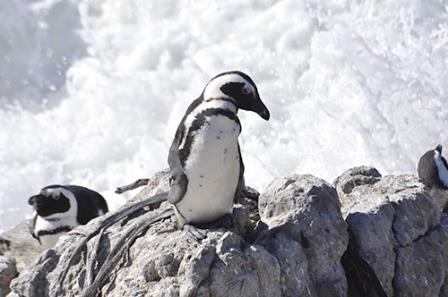 Nautical Miles from Southampton 5976
Nautical Miles from Southampton 5976
Nautical Miles to Cape Town 32
The lighthouse on this 200 acre islet gives a group of two flshes every 30 seconds.
Dassen Island lies five miles off the coast and is home to countless seabirds.
From here come the penguin eggs sometimes offered for sale in South Africa

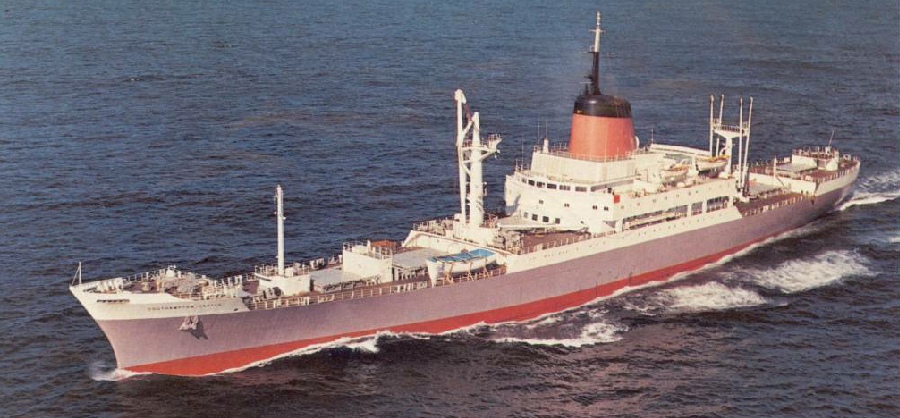
Southampton Castle
Robben Island
 Nautical Miles from Southampton 6001
Nautical Miles from Southampton 6001
Nautical Miles to Cape Town 7
This has an area of three square miles and lies in the entrance to Table Bay.
During its long and interesting history it has been used mainly as a prison and as a place of detention for lunatics and lepers but the last of these was removed in 1931 and the island is now fortified.
The light on Robben Island is occulting and is obscured every seven seconds

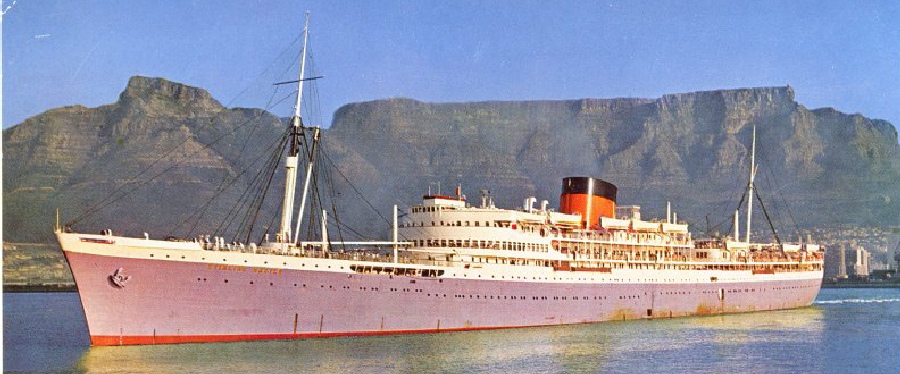
Stirling Castle
Table Bay Docks and Cape Town
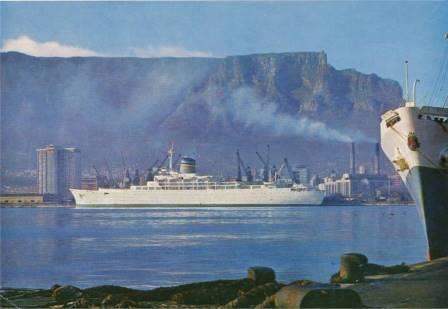 Nautical Miles from Southampton 6008
Nautical Miles from Southampton 6008
Here our vessel berths alongside a modern quay not far from the centre of Cape Town and most of our passengers disembark.
Table Mountain (3549 feet) with Devil’s Peak to the left and Signal Hill and Lion’s Head to the right, when seen on a sunny morning from Table Bay, is one of the world’s finest views and never fails to make a deep impression on the traveller, whether he be a South African returning home or a newcomer to these shores.
Cape Town, the Mother City and Parliamentary Capital of the Union of South Africa, was founded by Jan van Riebeeck in 1652. The population is 650,000 or whom about 275,000 are Europeans.
It is 956 miles by rail from Johannesburg and 1355 miles from Bulawayo.

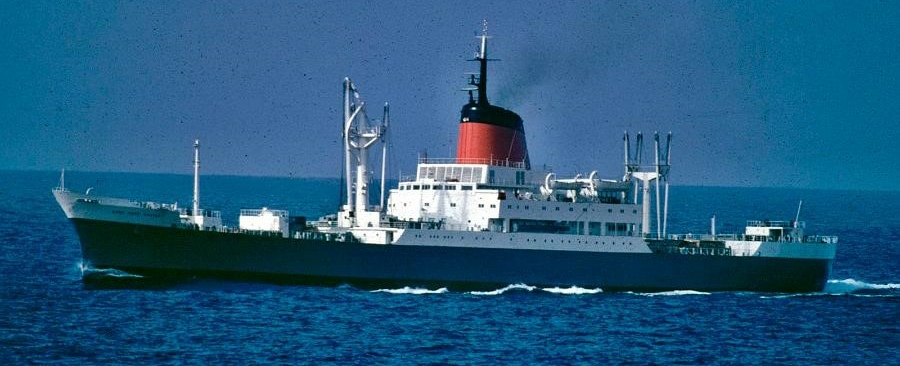
Good Hope Castle
Passing at Sea
Approximately every 3½ days a mail ship would pass one of her sisters proceeding in the opposite direction.
On April 1st 1965 Windsor Castle (southbound) passed close to Pendennis Castle (northbound) at 1444, the log notes that “The usual courtesies were exchanged”
Windsor Castle was on a course of 142º T at a speed of 20.8 knots. Pendennis Castle would have been on a reciprocal course and roughly the same speed.
Later in 1965 the mail service was reduced from 8 vessels to 7 with the withdrawal of Athlone, Stirling and Capetown Castles and the introduction of Southampton and Good Hope Castles.
The ships would then have to maintain an average speed of 22.5 knots.
Capt Alec Hort can been seen on the bridge wing of Windsor Castle
Capt Robert Cambridge was in command of Pendennis Castle
I am grateful to Richard Masters (Alec Hort’s Tiger) for the photographs and log extracts.
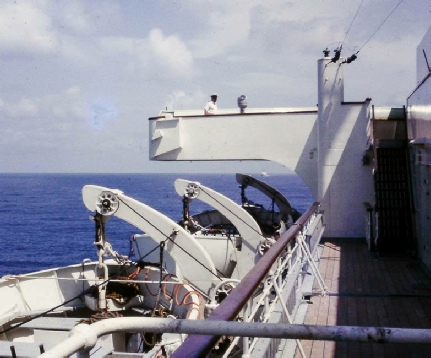


Las Palmas to Cape Town
Southampton to Las Palmas via Madeira




